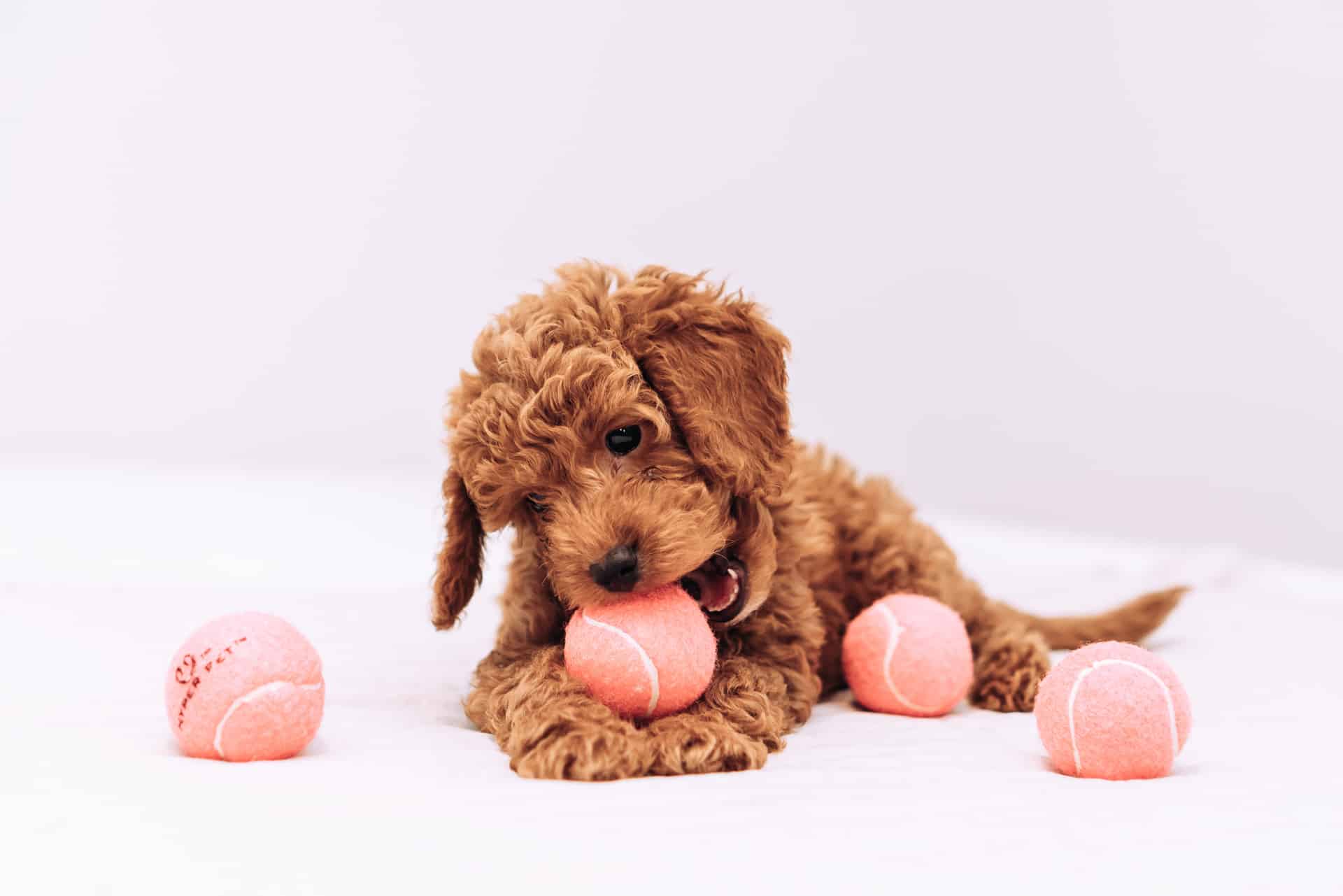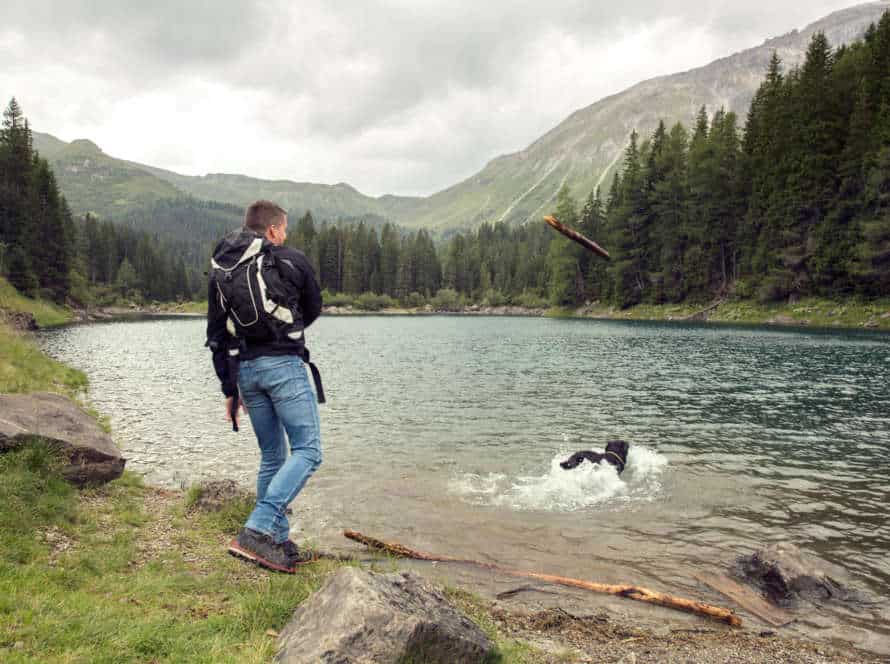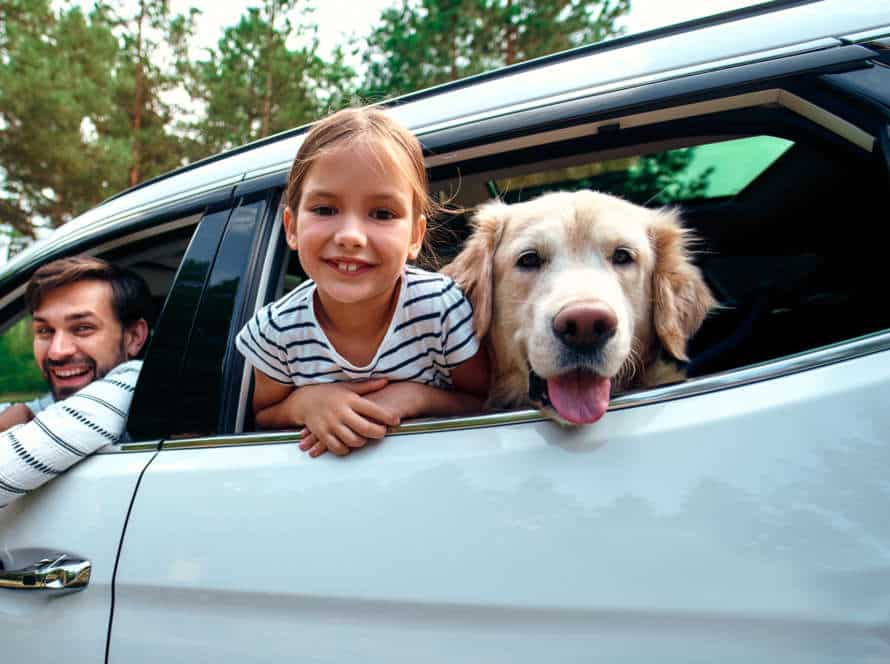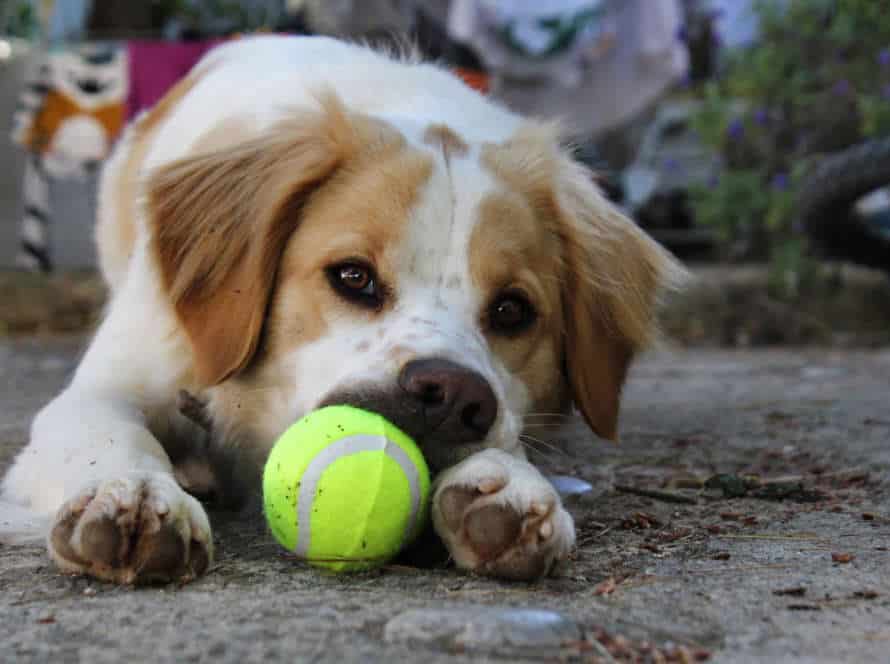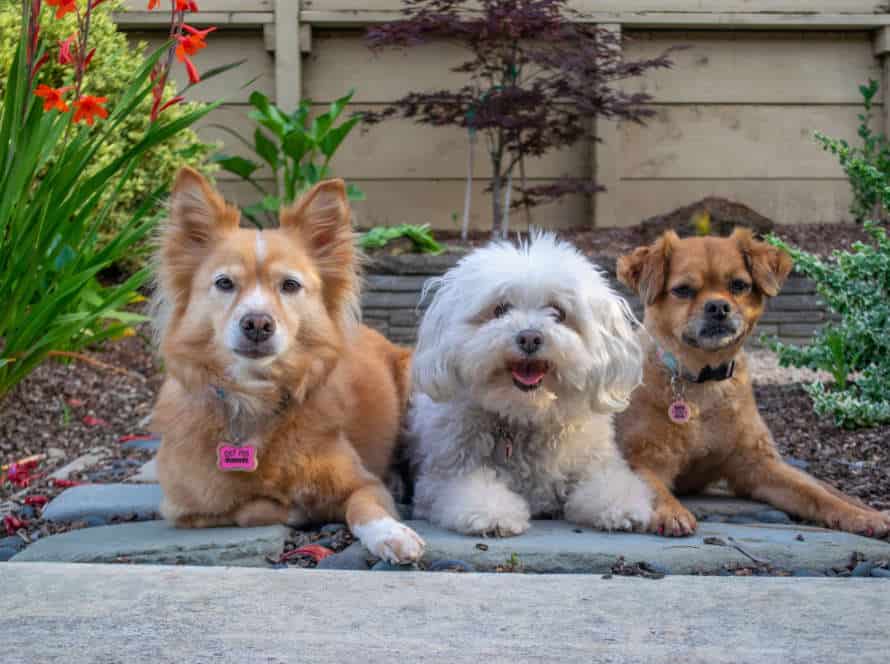Overcoming Toy and Space Guarding in Dogs
Toy and space guarding in dogs can be a major problem that needs quick action. Here are some tips on how to conquer it:
- Educate your dog the “leave it” command. This can help them realise that guarding certain items or areas is not allowed.
- Exchange up. Give your pooch a treat or a more valuable toy in return for the item they are protecting.
- Avoid punishment. Punishing your dog for guarding behaviour can make it worse.
- Get help from a pro trainer. A certified dog trainer can direct you on how to change your dog’s behaviour and overcome guarding problems.
Keep in mind, conquering toy and space guarding in dogs needs patience, consistency, and a commitment to work with your dog to modify their behaviour. With time and effort, you can help your dog learn new ways to act in these circumstances and create a better and more contented home environment.
Understanding the Behavior of Toy and Space Guarding
Sometimes, dogs may exhibit a behavior called toy and space guarding. This is when they become very protective over their toys or certain areas, like their bed or crate. When someone or another animal tries to take it from them, they can become aggressive. To fix this, we need to understand why it’s happening and what could be reinforcing it.
What is Toy and Space Guarding?
Toy and space guarding are common behaviours seen in dogs. It is when they protect their toys or own space from what they think is a threat.
It’s important to understand this behaviour. It is often caused by fear, anxiety, or bad experiences.
Signs of toy guarding are growling, barking, and other aggressive actions when someone tries to take away the toy. When someone tries to enter their space, like the bed or favourite spot, space guarding can show itself in similar ways.
To help your dog with toy and space guarding, get help from a professional. They can help train your dog to behave better and feel less threatened. Don’t punish them. Instead, reward them for sharing toys or allowing someone in their space.
The Causes of Toy and Space Guarding
Toy and space guarding in dogs is a common thing. It can be caused by various factors. Knowing them can help pet owners handle this issue, and keep their pets and family safe.
Some causes of toy and space guarding:
- Resource Protection: Dogs may guard their stuff because they think it is valuable and needs protecting.
- Fear: Some dogs may guard because other dogs and humans make them feel scared.
- Dominance: Dogs may guard to show they are in charge.
- Frustration: Dogs that don’t get enough stimulation or exercise may guard toys and space to let out frustration.
To overcome toy and space guarding in dogs, use patience, consistency, and positive reinforcement training. If the issue remains, ask a professional dog trainer for help.
Pro Tip: Don’t punish or scold your dog when it guards. It might lead to aggressive behavior and make the problem worse.
The Differences Between Toy and Space Guarding
Toy and Space guarding are two different dog behaviors. Comprehending the difference is key to dealing with them well.
Toy guarding is when a pup protects their toys or cherished objects from potential dangers. This may be with growling, barking, or biting.
Space guarding is when a canine wants to defend an area or human from possible threats, like another animal or individual.
Addressing both of these habits can be difficult. To tackle toy guarding, providing your pup with lots of playtime and teaching them commands might reduce their protecting behavior. To address space guarding, it’s about teaching dogs to feel secure and relaxed around other humans, dogs, or animals.
How to Prevent Toy and Space Guarding
Dogs may guard their toys or certain spots. This is called toy and space guarding. It usually doesn’t get too serious. But it can still be a hassle for pet owners. To stop this behavior, it’s important to figure out why it’s happening. And use techniques to stop it.
Preventing Toy and Space Guarding in Puppies
Puppies often struggle with toy and space guarding, but proper training and socialization can prevent it. Here are some tips:
- Introduce your pup to different objects and other dogs/people from an early age.
- Offer treats when they share their toys or food bowl, and play exchange games.
- Never punish them for guard behavior; instead, use positive reinforcement and redirect their attention.
- Teach them obedience commands like “leave it” and “drop it”.
- Get professional help if you’re having trouble. Pro tip!
Toys and Items to Avoid with Guarding Dogs
Guarding dogs can be possessive of their toys and space, which can lead to aggression. As a pet owner, you must know what to avoid to prevent accidents. Here are some triggers:
- Toys or items already owned by the dog.
- Food items, like rawhides or bones.
- Items with your or another dog’s scent, such as shoes or clothes.
- Things you show value to, like dog beds or water bowls.
Avoid these items to stop toy and space guarding. Also, give training, supervision, attention, and clear boundaries to your dog. A tip: Provide positive reinforcement and mental stimulation through interactive toys and games.
Socializing and Training to Prevent Guarding
Guarding behavior in dogs is common, and it can be unsafe. To prevent this, socialize and train your pup! Try these tips:
- Positive reinforcement with a pro
- Desensitizing to people & other pets around toys & food
- Rotating toys & bones regularly
- Teaching basic commands such as ‘drop it’ & ‘leave it’
- Regular playtime with other dogs
Pro tip: if your dog is already showing guarding behavior, get help from a professional ASAP.
How to Manage Toy and Space Guarding Behavior
Toy and space guarding is when a pup is possessive. They won’t share with people or other pets. It can be risky, so it’s important to manage it properly. Here, we’ll look at strategies to help manage toy and space guarding in dogs. These strategies include:
- Being consistent: establish clear rules and boundaries to help your dog understand what is expected from them.
- Using positive reinforcement: reward desirable behavior with treats and praise to encourage your dog to repeat it.
- Providing distractions: redirect their attention to something else when they start to display guarding behavior, such as giving them a different toy to play with or moving them to a different area.
Management Techniques for Toy Guarding Dogs
Challenging toy & space guarding behaviors in dogs can be conquered with these management techniques.
- Avoid free-feeding: Feed your pup at specific meal times instead of letting them free-feed. This lessens their chances of guarding food or the feeding area.
- Keep toys out of sight: Bring out toys only when you plan on playing with your dog. When done, put them away. This minimizes their contact with toys & reduces their urge to guard them.
- Teach the “drop it” command: Train your dog to give up objects with the “drop it” command. Reward them when they comply to reinforce good behavior.
- Designate a special toy: Let your dog have one specific toy they can keep. This can help them build a positive bond with that toy & lessen their guarding behavior.
Implement these techniques & help your pup learn good behavior & overcome their possessiveness.
Management Techniques for Space Guarding Dogs
If your pup has toy and space guarding behavior, it is important to take steps to control and conquer the behavior before it becomes more serious.
To help manage a space guarding dog, here are some tips:
- Keep the space neat and ordered so there’s less to guard.
- Teach the pup “drop it” and “leave it” commands to make him release items on command.
- Give the dog specific chew toys instead of letting him pick items to guard.
- Use positive reinforcement training to show him that giving up items isn’t bad. Reward him with compliments or treats when he releases them on command.
By using these techniques, you can help your space guarding dog learn to share and overcome the behavior.
How to Correct Toy and Space Guarding Behaviors
Toy and space guarding are natural instincts in dogs, but they can be a problem if they lead to aggression. To change this behavior, training and patience are needed. Here are some tips:
- Set up a “nothing in life is free” routine. This shows your dog that you are in charge.
- Teach the “drop it” and “leave it” commands using treats, praise, and clicker training.
- Play fetch and other interactive games to help your dog share their toys.
- Gradually let other pets and people into your dog’s space, starting with short, supervised visits.
- If the guarding behavior is severe, or if your dog has a history of aggression, get help from a professional dog trainer or behaviorist.
Remember: Consistency and positive reinforcement are key. Regular training sessions and patience will help your furry friend overcome their guarding instincts.
Changing Toy and Space Guarding Behavior
Dogs can often guard their toys or spaces. They think they belong to them, even when someone else is near. Fortunately, there are things we can do to manage this type of behavior. Let’s see how.
Behavior Modification Techniques for Toy Guarding Dogs
Toy and space guarding are frequent behaviors in dogs. To address aggressive tendencies, stress, or territorial behavior, you need to use specific behavior modification tactics.
Here are some techniques that can be used for modifying toy and space guarding in dogs:
- Conditioned Relaxation: Show the dog gradually what triggers the guarding behavior. Reward when it relaxes.
- Trade-Up: Train the dog to exchange toys and prized possessions with you. Offer high-value treats in return.
- Positive Reinforcement: Rewarding good behavior is vital. It builds trust and reduces anxiety.
- Impulse Control Training: Teach the dog impulse control commands, like “leave it” near toys and while guarding space.
Continuous reinforcement is key to making these techniques successful. This will give lasting change in toy and space guarding behavior.
Behavior Modification Techniques for Space Guarding Dogs
Overcoming space and toy guarding behavior in dogs can be tough. But, with regular training and behavior modification, success can be achieved. Here are five methods to help:
- Use positive reinforcement to teach the “drop it” command.
- Give high-value treats and praise when they give up a toy or leave an area they guard.
- Desensitize them by consistently being in the area – without interacting.
- Practice obedience training to build trust and respect.
- If guarding continues, get help from a professional dog trainer or behaviorist. They can offer personal advice to help you and your pup triumph.
When to Seek Professional Help
Toy and space guarding is a normal thing for dogs but can be tough to fix. If it’s not getting better, it’s smart to get professional help. Here are the signs to get help for toy and space guarding in dogs:
- Growling, barking, or biting when someone gets close to their toy or space
- Doing it more often or more than before
- Guarding high-value items like food or toys
- Guarding behavior causing problems with their daily life
Help can come from a vet, animal behaviorist, or certified dog trainer. They can figure out the problem, find the triggers, and make a plan for training to change the dog’s behavior. With the right help, toy and space guarding can be managed and even stopped.
Conclusion and Final Thoughts
To wrap it up, taming toy and space guarding in dogs takes patience, persistence, and positive reinforcement. A few points to remember:
- If you can’t manage it on your own, seek professional help.
- Never punish your pup for guarding, instead, attempt to divert their focus elsewhere.
- Socialize your pup from a young age and let them meet new people and animals.
- Regularly reward good behavior with treats and compliments.
By following these tips, you can help your pup get over guarding and have a wonderful connection with your furry pal.
Frequently Asked Questions
Q: What is toy and space guarding in dogs?
A: Toy and space guarding in dogs refer to their behavior of protecting their possessions or territory, displaying aggressive behavior towards anyone who tries to approach or take their belongings.
Q: Why do dogs exhibit toy and space guarding behavior?
A: Dogs may exhibit toy and space guarding behavior due to various factors, including genetics, lack of socialization, past traumas, anxiety, and fear.
Q: Is toy and space guarding behavior harmful?
A: Yes, toy and space guarding behavior can be harmful, as it can lead to aggression and canine bites, which can be dangerous for both humans and other dogs.
Q: How can I prevent toy and space guarding behavior in my dog?
A: Early socialization, positive reinforcement training, and consistent behavior management can help prevent toy and space guarding behavior in dogs.
Q: How can I overcome my dog’s toy and space guarding behavior?
A: Overcoming toy and space guarding behavior requires working with a professional dog trainer or behaviorist, who can create a customized behavior modification plan using techniques such as counterconditioning, desensitization, and positive reinforcement training to help your dog feel safe and comfortable.
Q: Is it possible to completely eliminate toy and space guarding behavior in dogs?
A: While it may not be possible to completely eliminate toy and space guarding behavior in dogs, it can be significantly reduced and managed with the help of professional training and behavior modification techniques.

